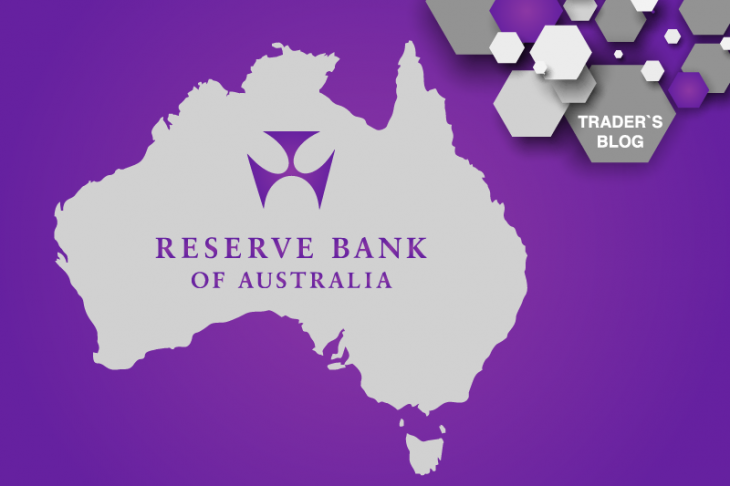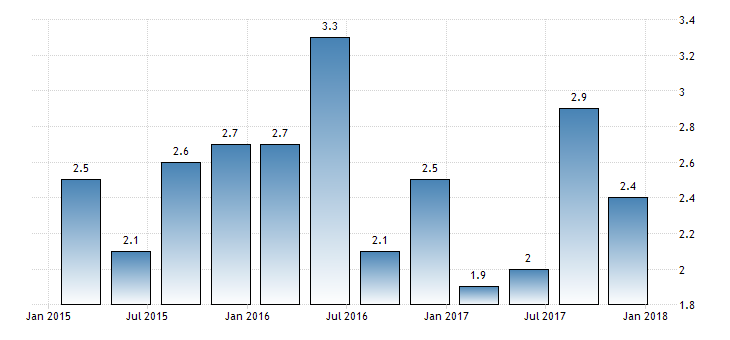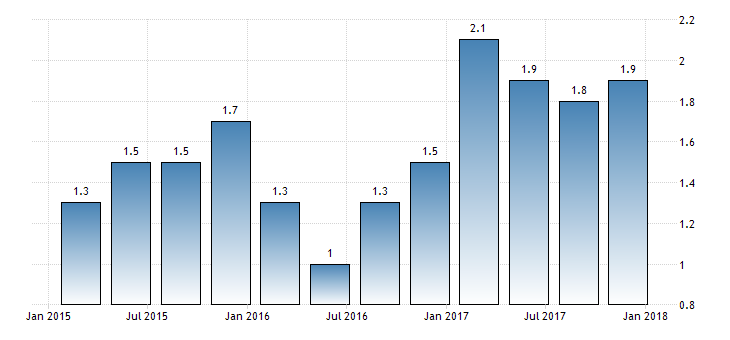
Australia: the state of the economy and prospects for raising the interest rate of the RBA
Australia is a unique country in its geographical location, as it is the only country that occupies the whole continent, even the smallest. The main industry in Australia is the mining industry. In Australia, the natural resource potential is 20 times higher than the world average. The country ranks second in terms of bauxite reserves, 1 in uranium reserves and 6 in coal reserves. Also in Australia are significant reserves of manganese, gold, diamonds, as well as oil and gas fields.
And so, let us now consider the state of Australia’s key economic indicators, which will help us assess the state of the economy and the possibility of raising the interest rate of the RBA.
Australia: GDP
Gross domestic product (GDP) – is the main indicator of the country’s economic growth. The GDP indicator reflects the total market value of all goods and services produced in the country. According to the results of the 4th quarter of 2017, the annual GDP growth in Australia was 2.4%, which is in principle an average for the last three years and is quite a significant growth even among the developed countries of the world. For example, in the US, the average GDP growth from 2015 to 2018 was 2.2%.
Fig. 1. Dynamics of changes in GDP growth in annual terms from 2015 to 2018.
Australia: Unemployment rate
The unemployment rate – is the main indicator of the social sector of the country and indicates the general welfare of the population. Reducing the unemployment rate will always have a positive impact on the overall costs of the population, thereby accelerating the growth rate of inflation, which is one of the main problems of further economic growth in developed countries. Over the past 12 months, the unemployment rate in Australia has not been significantly changed, retaining its significance within 5.5%.
Fig. 2. Dynamics of changes in the unemployment rate from February 2017 to January 2018.
Australia: Inflation rate
Inflationary processes in the economy of any country play one of the key roles in its further development. In simple words, inflation is a depreciation of a country’s monetary unit, which is expressed in the growth of prices for the same product. On the one hand, this process may seem daunting, but without rising prices for products or services, enterprises on the territory of the country will not be able to constantly increase their incomes, against which the country’s GDP growth will also slow down, and under certain conditions even show a negative value. In the global economy, the range of inflation, under which there is a stable growth of the economy, is within 2-3%. According to the latest data, the inflation rate in Australia is 1.9%, while in the past three years, only one time it reached 2.1%.
Fig. 3. Dynamics of changes in the level of inflation from 2015 to 2018-th year.
Conclusion
Based on GDP, unemployment and inflation indicators, it can be concluded that the Australian economy is developing at a moderate, stable pace, without pronounced signals of a possible acceleration of the growth rate of the economy. The main focus remains on the level of inflation, which only approached the lower boundary of the target range of 2%, against which the Reserve Bank of Australia will maintain the current monetary policy unchanged and the main discount rate at 1.50%, it is the interest rate reduction contributed to rising inflation in Australia.
Alexander Sivtsov


